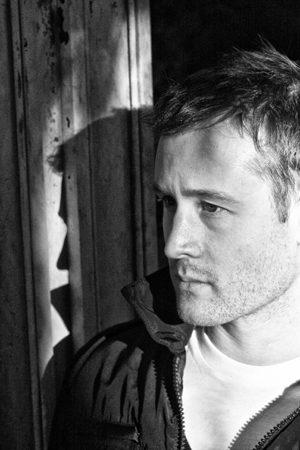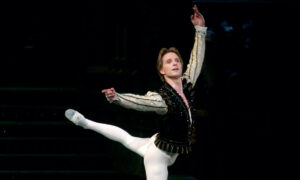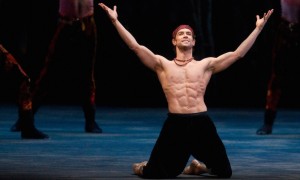By Grace Edwards.
He’s danced with the Royal New Zealand Ballet, travelled the world and worked in Europe as a freelance dancer and choreographer. Now Germany-based choreographer Andrew Simmons returns to New Zealand to create his third work for the RNZB, A Song in the Dark.
A Song in the Dark is one of three works featured in the RNZB’s upcoming TOWER season, From Here to There. Dance Informa’s Grace Edwards asks Andrew about his latest offering.
Andrew, your piece, A Song in the Dark, has been described as “exploring themes of missed opportunities, love and beauty in the ordinary.” What inspired you to create such a work?
The inspiration for the work comes from many difference places, mostly from day to day experiences, the interactions that we have with others, and the beauty that is all around us in things we take for granted, such as friendship, people, nature, art, and architecture.
Much of the movement in my work is fleeting and danced in couples, which heightens these aspects.

The Royal New Zealand Ballet's TOWER season, From Here to There
Why did you choose to set A Song in the Dark to music by minimalist composer, Philip Glass?
Once I’d decided that I wanted to use that piece, I thought more about how I wanted to structure the work, and the other two pieces were easy to find.
Is that how you always begin the creative process? How do you usually conceive and create your works, from start to finish?
I almost always start with the music. That gives me the best indication of how I want to the piece to feel and look. Then it gets more specific, working out the number of dancers and which sections of music may fit group, duet or solo work best.
I start with a few steps that I can give the dancers on day one, and the movement vocabulary evolves from there. I try to work as fast as possible so that there is time left for things to be expanded on and cleaned once the rough draft of the work is finished. Then, once you’re in the theatre, you see if anything looks strange in the space and, of course, if there are any traffic problems moving on and off stage.
Once that’s all done itʼs time for the dancers to do what they do best and present the work, hopefully in the same way it was initially envisioned.
You have worked as both a dancer and a choreographer. What do you consider some of the personal highlights of your career?
The transition from dancing to focusing more on choreography has only recently taken place for me, and at what is quite a young age for that change to happen. To be honest, the highlights are the people Iʼve been able to meet and work with.
Dancing throughout the UK, China and Australia with the RNZB gave me some great experiences, and dancing Jorma Eloʼs Plan to A was one of my most enjoyable moments as a dancer because of the unique choreographic style of the piece. And of course, the opportunities I have had to create works for the RNZB.
Having been an RNZB dancer yourself, does that affect the way you work with your dancers, particularly in relation to A Song in the Dark?
Itʼs really great actually. The times which I’ve found the hardest were during choreographic workshops and when I was still a dancer in the company creating things. Coming from the outside and then working with the dancers has been easier, as there is less of a blur about what position each person is in. It is now clear that I am there as a choreographer and that that’s my job, first and foremost.
It also helps that we can have a relaxed working environment, as I’ve spent many years working with the same people and we’ve shared a lot of good times together.
What is a typical day like working with the RNZB?
The dancers start the day with class for an hour and a half at 9:30am. Then the day is split up into three main rehearsals, one in the morning, then two after lunch. During a triple bill season there is one rehearsal for each piece. There are also rehearsal times that can be used in other studios if there are dancers that are free whilst not being used in the main rehearsal.
Finally, what would you like the audience to take away with them from A Song in the Dark?
Thatʼs a hard question to answer, as itʼs so individual. The times that people come and tell you their thoughts and feelings about a work, ones that are so removed from anything you had been focusing on whilst creating it, are often the most interesting. I donʼt feel you can or should tell someone what they should be looking for in a work, or what they should ‘get’ from something like this. My job, as an artist, is to help create individual interpretation and thoughts.
All the best for the season, Andrew!
The Royal New Zealand Ballet’s TOWER season, From Here to There, runs from February 25th to March 27th 2010. It begins in Dunedin and tours to Invercargill, Christchurch, Hastings, Hamilton, Auckland and Wellington. To book tickets or to find out more, see the RNZB’s official website at www.nzballet.org.nz















